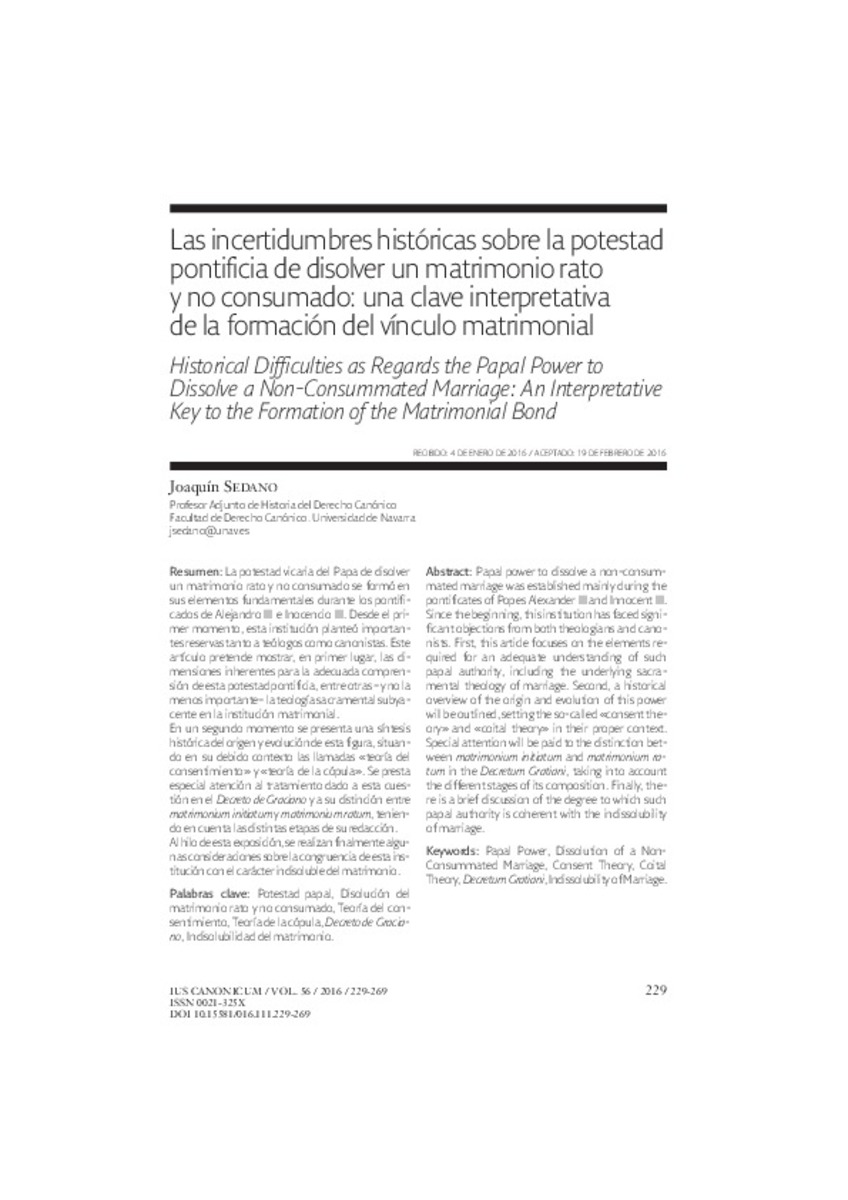Las incertidumbres históricas sobre la potestad pontificia de disolver un matrimonio rato y no consumado: una clave interpretativa de la formación del vínculo matrimonial
Other Titles:
Historical Difficulties as Regards the Papal Power to Dissolve a Non-Consummated Marriage: An Interpretative Key to the Formation of the Matrimonial Bond
Keywords:
Potestad papal
disolución del matrimonio rato y no consumado
teoría del consentimiento
teoría de la cópula
Decreto de Graciano
indisolubilidad del matrimonio
Papal Power
Dissolution of a Non- Consummated Marriage
Consent Theory
Coital Theory
Decretum Gratiani
Indissolubility of Marriage
Publisher:
Servicio de Publicaciones de la Universidad de Navarra
Citation:
Sedano, J. (Joaquin)
Statistics and impact
0 citas en

Items in Dadun are protected by copyright, with all rights reserved, unless otherwise indicated.








